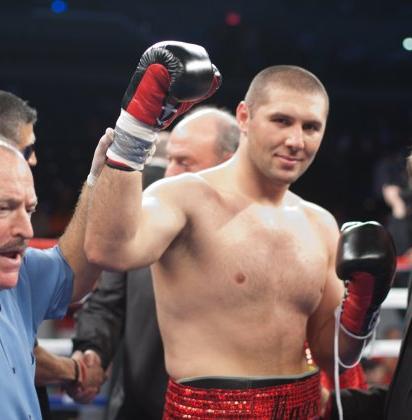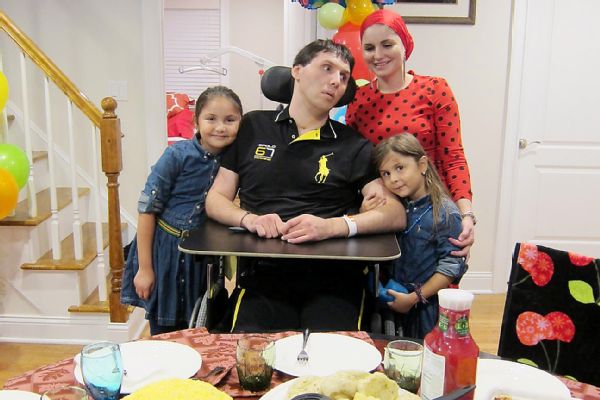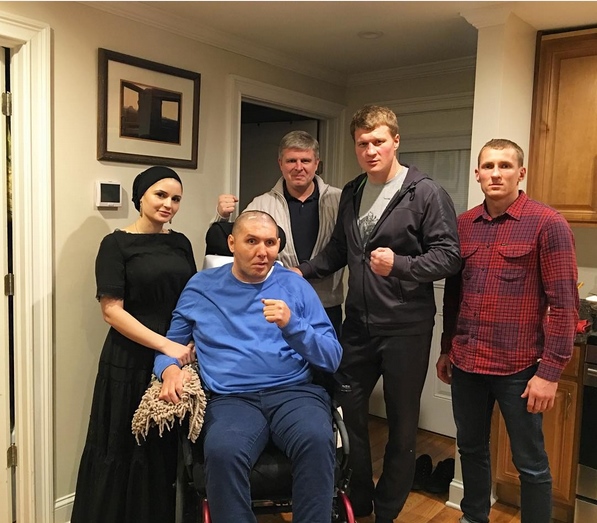Klitschko Sued by Brain-Damaged Magomed Abdusalamov Raises Questions of Negligence and Responsibility
By Bryanna Fissori
Boxing Champion Wladimir Kilschko is being sued in a controversial case of severe brain damage. He is joined in the case by five ringside medical doctors.
On November 2, 2013 Magomed Abdusalamov sustained a devastating loss to Mike Perez. The promotion hosting the bout was K2 Boxing, which is owned by Kilschko. During the bout Abdusalamov suffered a broken jaw and hand, and after 10 rounds he subsequently fell into a two week long coma, had several seizures and had to undergo surgery to have a blood clot removed in his brain. Doctors are predicting that the boxer may never walk or talk again.
Responsible Parties
In March 2014 a lawsuit was filed by Abdusalamov’s wife claiming her husband’s condition is the result of reckless, gross negligence and medical malpractice. She has brought a cause of action against Kiltschko, K2 Boxing Promotions, The State of New York, the New York Athletic Commission’s five athletic commission doctors. The New York State Athletic Commission cannot be sued directly because it is immune under specific legislation, though it’s employees are not. The sum of the suit, which was filed in March, equals approximately $100 million. Kiltschko involvement is publically a recent addition to the list of defendants.
Injuries are expected in any combat sport. In fact injury is the ultimate goal. Abdusalamov’s family is contending that the injuries sustained by the boxer were excessive and preventable by reasonable discretion of the doctors and promotion to the degree that their actions constitute negligence and malpractice.
What Happened That Night
The first round of the fight Abdusalamov was hit by his opponent’s forearm, which caused his nose to break. The illegal blow could have constituted a no-contest ruling immediately, but did not. It was evident by the seventh round that Abdusalamov’s face was visibly disfigured by a broken jaw. Doctors as well as the referees and the boxer’s trainer allowed him to continue the fight.
During the post-fight exam Abdusalamov conveyed that his head hurt (though this is not an uncommon claim post-fight). It was confirmed that he had broken his jaw, nose and hand. He also had to have a cut above his eye sutured. Doctors recommended he have his injuries addressed within a day or two of returning home. Abdusalamov resided in Florida. After the doctors cleared the fighter, a state athletic commission inspector noticed blood in Abdusalamov’s urine sample, which he recognized as a sign of possible internal bleeding. He advised the boxer to go to the hospital. Though two ambulances were on site, he and his trainers were advised to take a taxi. It turns out his brain was bleeding.
Legal Grounds
The case has been fairly inactive since it’s filing in March as the family awaits the results of an investigation being conducted by the athletic commission.
Wladimir Kilschko’s part in this whole mess pertains to his responsibility as the promoter of the event. He has already attempted to involve his insurance company, but they have stated that their policy contract expressly excludes injuries sustained during boxing matches. Injuries are a virtual guarantee. That being said, the debate is going to center around whether or not all the people named in the suit acted reasonably given the circumstances. If not, this is where claims of negligence and malpractice may be validated.
In order to obtain judgment against Kilschko, Abdusalamov’s attorney will have to prove that it was within Kischko’s legal responsibility, or the responsibility of the promotion to take action to ensure the boxer’s well being given the circumstances. On the face of the argument one would assume most of this responsibility would fall on medical professionals in charge of the fighters, but the terms of the promotional agreement could potentially bare other standards.
Brain Damage Precedents
A somewhat similar case was filed in 2008 by the family of a 12-year-old boy in Lansing, Michigan who suffered a subdural hematoma and subsequent coma as the result of injuries during a boxing match. No ambulance was provided. The boxing club named in the lawsuit decided to settle rather than litigate.
Because most brain damage sustained by combat sports athletes is over the long term of their career and not an isolated incident, there are few lawsuits to stand as precedent.
Many promotions ensure that their competitors agree in writing that the sport is an, “inherently and abnormally dangerous activity,†which gives rise to many health risks including “irreversible neurological trauma.â€
Even express language such as this can fall subject to legal disputes. Many courts are hard-pressed to enforce liability waivers if there is an act of negligence involved, the fine print is hidden, or the signing party was not made fully aware of the potential risks involved.
In November 2013 the National Football League (NFL) paid out $765 million in a lawsuit which alleged that the organization hid evidence supporting the high risks associated with repetitive brain trauma. The litigation was filed in January of 2012 and encompassed over 4000, plaintiffs, many of who sustained repeated head injuries during their careers and are now suffering from mental illness.
Assumption of Risk
Boxing is obviously a dangerous sport and statistics for brain damage are all over the map. The American Association of Neurological Surgeons reported that 90 percent of boxers suffer some kind form brain injury while competing or training. Because of these brain injuries, boxers are more prone to mental deterioration during their later years, which may lead to Parkinson’s or Alzheimer’s disease.
The “Assumption of Risk Doctrine†may potentially come into play in this case. In a recent decision the Court of Appeals reaffirmed that the doctrine, “applies where a consenting participant in sporting and amusement activities ‘is aware of the risks; has an appreciation of the nature of the risks; and voluntarily assumes the risks,†and where the plaintiff has assumed the risks, “defendant owes him no duty.†Bukowski v Clarkson Univ., 19N.Y.3d 353 (2012).
Though facts about the potential risks of brain damage may be readily available, the case is still likely to come down to the acts of the defendants during the single incident of Abdusalamov’s injury. Recent reports state that the boxer is in a rehabilitation facility and has accumulated over $1 million in debt for medical bills. In the mean time, the New York Athletic Commission has been actively making efforts to change their medical protocol for boxers and competition.
http://www.boxinginsider.com/headli...v-raises-questions-negligence-responsibility/






